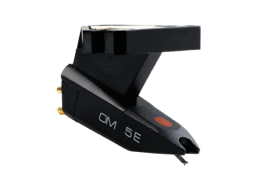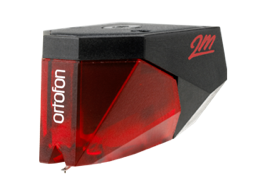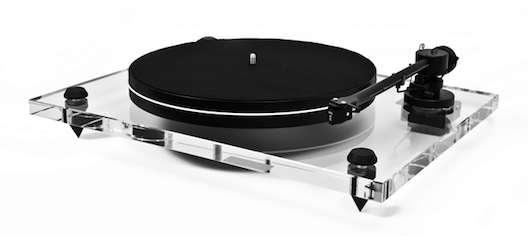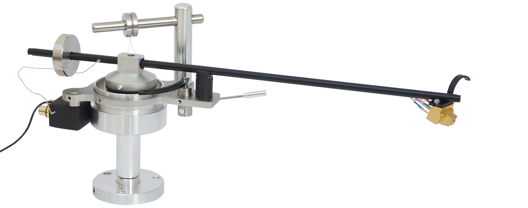Ortofon phono cartridges
All about the Ortofon phono cartridge range and accessories from Totally Wired, New Zealand’s leading analogue audio specialist.
We’ve enjoyed many Ortofon cartridges at home and have particularly fond memories of several generations of the MC30 Super. Ortofon cartridges are found on many turntables and are a more affordable alternative to our other favoured cartridge Dynavector. Each has a distinct character and physical properties that may make a better match for your turntable and system. If you would like to break out of the mould the Nagaoka cartridges are a little less in price than Ortofon’s popular 2M series yet may give you a more seductive sound. This is where our many years of experience and knowledge will prove to be invaluable to you.

Ortofon has always been a company working with sound reproduction. It was founded in 1918 in Copenhagen and started up making soundtracks for movies. In 1948 the company developed its first moving coil cartridge, since then Ortofon has developed and manufactured more than 300 different cartridges.
Today Ortofon is the world leader in cartridges. This is a result of significant design experience and great technological know-how. There will be 3 areas of interest for any analogue enthusiast - the entry level OM series cartridges and styli, the new 2M series of Moving Magnet cartridges, and the ever broadening range of Moving Coil cartridges, from entry level options to true state of the art.

In fact the Ortofon OM10 was my first real hifi cartridge and is the cartridge of choice for just about every decent entry level turntable. Its excellent tracing ability, light weight and upgradable styli make it just as good a choice today as it was at its inception. There are interchangeable styli for specialist applications such as DJ use and playing 78s, which just slot straight onto the OM series body. Also a P mount version. It’s still very much worth considering the better OM styli as upgrades.
OM5e cartridge $119
Stylus 5E $95
Stylus 10 $119
Stylus 20 $329
Stylus 30 $489
Stylus 78 $119
The new 2M Series
First seen on the latest version of the Project Xpression 3 and very much a key contributor to its sound quality the new Ortofon 2M Red cartridge and its more up-market brothers are now available for use on other turntables.
The new 2M cartridge range is developed together with the Danish designer ‘MøllerJensen Design’ from Copenhagen, Denmark – the same designer who designed the award winning cartridge MC Jubilee and the Kontrapunkt series.

2M is designed for precise and accurate retrieval of the information in the record groove. The design is optimized for ease of mounting, with the cartridge weight and size intended fit the most common turntables at the market today.
All of the 2M cartridges feature diamonds which are polished to the highest standards in the industry. The 2M Red features a tipped elliptical diamond, while the 2M Blue features a nude elliptical diamond. The 2M series has interchangeable stylus allowing you to upgrade further in the future. The Bronze and Black models provide real competition for moving coil cartridges it terms of their performance and don’t require additional step up devices. Cartridge price includes stylus.
2M Red $189
2M Blue $379
2M Bronze $689
2M Black $1,149
User replaceable styli – Red $149, Blue $289, Bronze $519 and Black $859.
Moving Coil Cartridgess
A far better way to build a cartridge is to replace the magnet with coils of very fine wire. These weigh much less, so are easier to move. Which means that a moving coil cartridge is capable of responding in a much better way to the impulses generated by the stylus. This translates into more musical detail, faster response and far more enjoyment for you. So to investigate moving coil head over to our Dynavector page.
Ortofon’s Stylus and record care tips

To maintain optimal sound reproduction and to minimize wear on your record as well as on your stylus, we recommend the following procedure before and after each playback:
Remove dust from the stylus tip using a suitable small brush - such as one of the Ortofon types with the packing - which should be guided carefully along the cantilever in the direction of the stylus tip. Following this treatment there will normally be no need for further stylus cleaning. Clean the record surface from dust by using a fine anti-static brush or cloth Ortofon do not recommend the use of solvents containing alcohol for cleaning of either record surface or stylus.
General cartridge mounting
All Ortofon cartridges have a colour coding of the terminals, indicating red and green for right channel respectively hot and ground terminal. White and blue for left channel respectively hot and ground terminal.
The Green terminal will always be used for grounding the cartridge housings or motor-system, whenever connected inside the cartridge. We recommend to connect lead wires to the cartridge and head-shell before mounting the cartridge on the head-shell. Remember correct orientation of the leads because of cartridge terminal pin dimensions of 1.2mm and head-shell pins normally only 1.0mm.
For alignment of overhang please follow record player instructions. Where no instructions – or alignment protractor available - we recommend 16 mm as a general position of the stylus in front of the spindle centre for having almost zero tracking error on two stylus positions, one at about 30mm inwards from the starting groove and again near the end of playing.
Azimuth adjustment – or vertical alignment of the cartridge - is very important for optimal channel separation. The checking is easily done by lowering the cartridge onto a thin mirror - placed on the record surface - and examining whether the reflection lines up square with the cartridge, when viewed from the front. During this test tone-arm must still be parallel to the record surface. If not obtainable - because of mirror thickness - remove record and work directly on the mat. If alignment is still incorrect and not adjustable - because of fixed head-shell - the only solution is to resort to packing on one side of the head-shell.

Cartridges are constructed so that cantilever angle corresponds to the 20 deg. record cutting angle, when the cartridge is loaded with recommended tracking force and the cartridge base is parallel with the tone-arm and this again is parallel to the record surface.
Correct bias or anti-skating adjustment is important in order to achieve optimal tracking ability and thereby minimum record wear and distortion. A number of players have a device – which, related to the tracking force – will give an anti-clockwise force needed to the tone-arm. Correct bias has to compensate for the inwards directed torque on the tone-arm caused by the friction between stylus and groove. But this again is influenced by stylus type and amplitudes in the record.
A simple recommendation for a rather precise bias: If you hear distortion in say right channel - when using recommended tracking force - increase the bias-scale and vice versa.
When choosing either MC or MM-cartridges for your record player, total mass of tone-arm including cartridge and head-shell has to be taken into account in relation to the mechanical compliance (elasticity) of the cartridge cantilever system. Meaning that high mass of the combination needs low mechanical compliance, otherwise record warps can easily provoke tone-arm vibrations at frequencies around 4 to 6 Hz – that will bring degradation of performance. At least 8 Hz is advisable.
Fault Finding
One channel missing can arise for several reasons. For cartridges mounted in head-shells check cable shoes for not being short circuited or wires inside the insulation being disconnected from the cable shoe.
It is our experience that dirt is the main reason for missing contact in systems using the SME-type tone-arm connection. Dirt or some sort of oxidation – if contacts are not gold-plated or if gold plated contacts have been exposed to abrasive cleaning – can happen on all contacts involved and especially when systems are often taken in and out as the case will be for DJ`s.
For cleaning contacts we recommend to use the well known contact spray WD-40. This will also be very helpful for lubricating the union-not on the SME-type tone-arm, which very often is tightened unnecessary hard because of sluggish function. Correct tracking force is very important for optimum performance as well as for reduction of wear in the record caused by mis-tracking. Tracking force should rather be too high than too low to overcome high amplitudes in the record and should be adjusted together with the anti-skating.
Expected Stylus lifetime
If normal attention has been paid on cleaning record as well as stylus as mentioned, we find that 600 hours up to 1000 hours is possible without degradation of performance. So if you play one or two albums most days of the week, you can expect to enjoy two to three years before having to look at replacement. The better stylus profiles on more costly cartridges do allow them to last a little longer, but conversely, when they do start to give out, the drop in sound quality can be more dramatic. If you find that mis-tracking becomes more evident, or the sound is simply dull and un-involving - which is usually indicated by a loss of interest in playing records - then it will be time. And then of course there are those accidental breakages and bent cantilevers. Here's the best way to think about it - the cost of a new stylus is directly comparable to a car tyre (and you'll probably know there are a wide range of these too) and the average lifespan is remarkably similar. You wouldn't drive your family around on bald tyres and you shouldn't risk damage to your precious records and personal enjoyment with a worn or damaged stylus. Remember that all moving magnet styli are user replaceable and we can quickly source new exchange units at a concessionary price for moving coils.
Call or e mail us now for Ortofon cartridges and styli –
The Terrace Houses
217 Stuart Street
Dunedin 9016
New Zealand
NZ Toll Free
Phone
Cell Phone
Mail
0800 909 101
(+64) 03 4790 444
(+64) 021 963 321
info@totallywired.co.nz
Direct Contact
John Ransley and Carolyn Guytonbeck are the principals behind Totally Wired. It’s our own business and we take pride in building something worthwhile.
If you want to contact us directly per mail:
